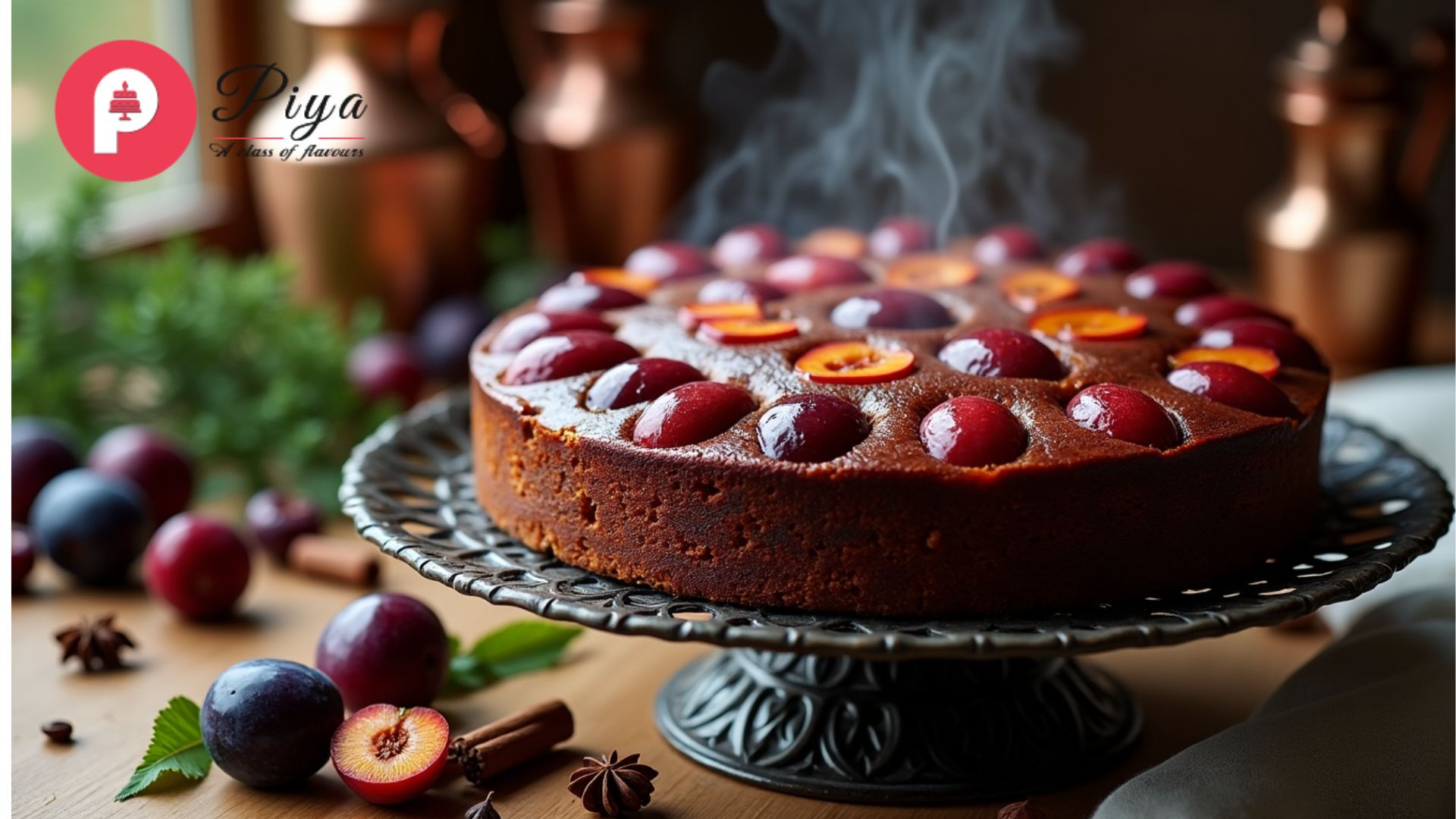Warm spicy and caramelized fruit fragrances are wafting throughout the kitchen. The scents announce the arrival of the holiday baking season. A traditional plum cake easily captures the essence of the holiday season better than any other dessert.
For many years, our family’s plum cake recipe has been changing and combinings with others. The blend of dried fruits, nuts, and aromatic spices that we have reached is just perfect. The term “plum cake” misleads many people. The true traditional recipes do not use fresh plums but only dried fruits preserved in rum or brandy.
This widely adored holiday delicacy is an invitation to bakers of any skill level. Our recipe is constructed in a way that each step is explained and so, you can make a rich flavorful cake. You will learn to choose the best ingredients as well as the perfect baking temperature. Your home-made cake will be as good as the one from the bakery.
Essential Ingredients and Equipment
Let’s create a perfect plum cake together. You’ll need the right ingredients and proper equipment to get started. The distinctive rich flavor and moist texture comes from carefully selected ingredients.
Our dried fruit mixture combines:
- Black raisins (seedless)
- Dates (finely chopped)
- Dried prunes
- Candied orange peels
- Mixed dried fruits (apricots, figs, cranberries)
- Tutti frutti to add texture
The base ingredients consist of all-purpose flour, unsalted butter, brown sugar, and eggs. Our signature spice blend of cinnamon, nutmeg, cloves, and cardamom powder will boost the flavor profile. Dark rum works best to soak the fruits if you want a traditional rum plum cake.
Here’s the equipment you’ll need:
| Basic Equipment | Special Tools |
| Digital scale | Free-standing paper loaf mold |
| Mixing bowls | Oven thermometer |
| Measuring cups/spoons | Cooling racks |
| Basting brushes | Oven mitts |
A rectangular paper loaf mold with corrugated sidewalls works best. It distributes heat evenly and will give you consistent baking results. These molds can handle temperatures up to 390°F and resist grease and warping – perfect qualities that make our rich plum cake turn out great.
The Art of Fruit Soaking
A perfect plum cake’s secret lies in fruit soaking, a tradition that goes back to early England’s harvest season. We found that proper fruit soaking is a vital part of developing rich, complex flavors that make our plum cake exceptional.
The traditional alcoholic version needs fruits soaked at least a month before baking. High-quality dark rum or brandy works best, and fruits should stay completely covered. The process isn’t complicated but needs patience. Here are the best soaking methods we use:
- Traditional Alcohol Soak: Dark rum or brandy, minimum 1 month
- Quick Soak Method: Overnight soaking (flavors won’t be as strong)
- Non-Alcoholic Alternative: Orange or grape juice, maximum 2 weeks
- Combination Method: Mix of alcohol and fruit juices
Glass containers work best since alcohol can react with other materials. We check our fruits regularly and give the container a gentle shake every few days. A quarter cup of soaking liquid goes in whenever the top layer of fruits looks dry.
Fresh orange juice creates great results if you want a non-alcoholic version. Note that juice-soaked fruits need refrigeration and should be used within two weeks to avoid fermentation. The flavor might be milder but tastes just as good.
Mastering the Baking Process
The baking process marks the most significant part of our plum cake experience. Your perfectly baked cake awaits after preparing the fruit mixture and gathering ingredients. Let me walk you through the exact steps that will give a delicious cake.
Start by creaming butter and sugar until pale and fluffy. This process usually takes 3-5 minutes. The right texture in your final cake depends on this vital step. Follow this tested mixing sequence:
- Beat butter and sugar until light and fluffy (3 minutes)
- Add eggs one at a time, beating well after each addition
- Alternate between adding flour mixture and milk
- Fold in the soaked fruits gently
The oven should be preheated to 350°F (180°C) before you start mixing. This temperature creates perfect even baking. Your cake needs 45-55 minutes to bake. Keep the oven door closed during the first 45 minutes to prevent the cake from sinking.
A toothpick inserted into the cake’s center should come out clean or with just a few moist crumbs to check if it’s done. The cake needs to cool completely in the pan before removal. Your patience will reward you with a moist texture and intact top.
Conclusion
Traditional plum cake proves the value of patience, precision, and holiday baking joy. This detailed guide shows you each significant step – from selecting premium dried fruits to achieving the perfect baking temperature. The magic happens in those carefully soaked fruits, which you can steep in dark rum for that classic taste or juice for an alcohol-free version.
Making this recipe successfully needs attention to detail. You’ll need proper equipment and precise measurements. The process requires patience during fruit soaking and baking stages. Our proven techniques will help your plum cake emerge with its signature rich aroma and perfectly moist texture that makes this holiday treat special.
Your plum cake’s story unfolds through your choice of fruits, soaking method, and baking care. This recipe provides the foundation to create your perfect plum cake that will bring warmth and holiday spirit to your home. You can preserve a family tradition or start a new one with this timeless treat.

